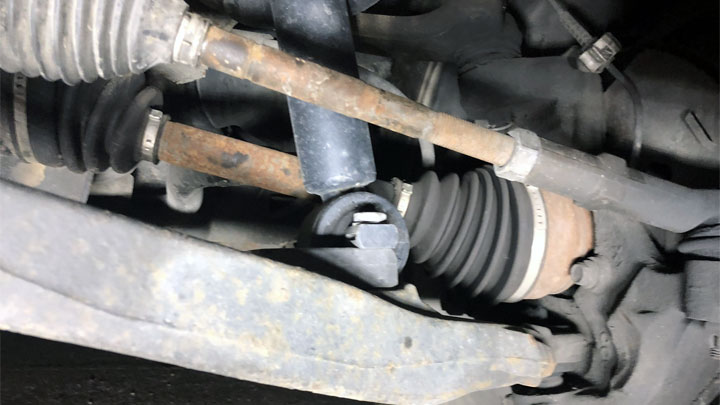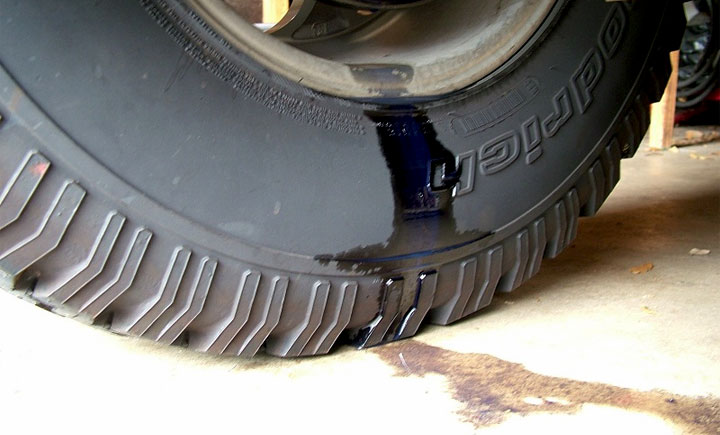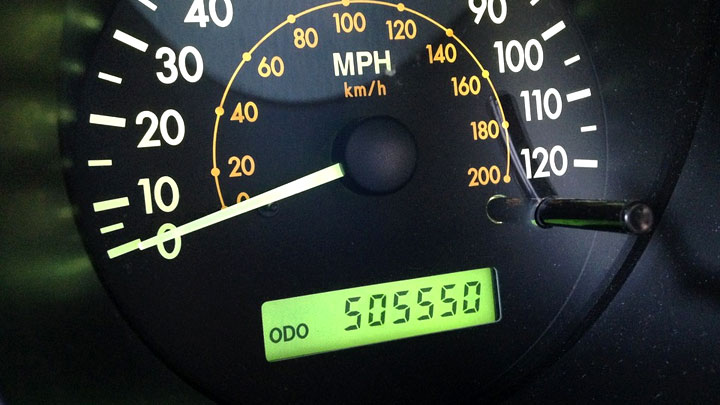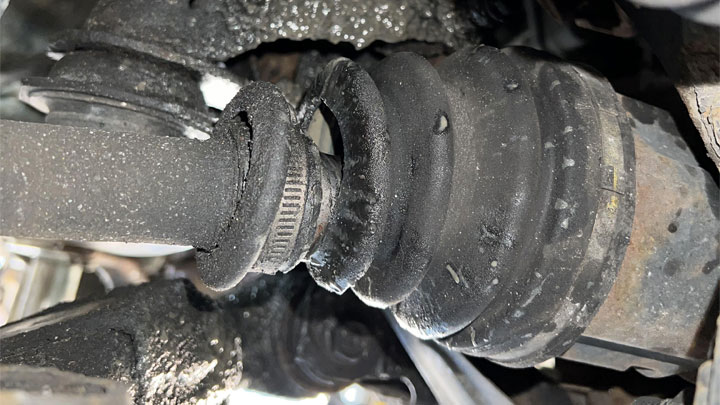4 Symptoms of a Bad CV Axle (Half Shaft)
All cars and trucks incorporate a method to deliver power from the engine to the wheels. This method for the majority of modern passenger vehicles (excluding most two wheel drive pickup trucks) involves the use of two or more constant velocity (CV) axles.
In this article, we will discuss the common symptoms you’ll experience with a faulty CV axle, what causes its failure, and how much it will cost to replacement.

Bad CV Axle Symptoms
Being sensitive to your car while driving and maneuvering can enable you to identify emerging problems well before your car breaks down alongside the road. Keep in mind that any CV axle issue is solely the result of CV joint wearout and failure since the axle itself is simply a precisely machined cylindrical steel bar.
The following signs are typical of CV axle problems.
#1 – Strange Noises At Low Speeds

Clunking, popping or clicking sounds from the right or left side of your car when making a sharp turn at low speed. May be noted while backing up, for example, when backing out of your garage and turning sharply left or right.
See Also: 9 Causes of Steering Wheel Noise When Turning
#2 – Strange Noises During Acceleration
The same sounds during moderate to hard acceleration, especially when turning even gradually right or left.
#3 – Steering Wheel Vibration

Intermittent vibration sometimes felt in the steering wheel while accelerating or cruising at higher speeds. This vibration may be confused with an out-of-balance wheel vibration.
#4 – Grease on Wheel or Tire

Each CV joint is sealed inside a flexible rubber or plastic boot. Grease is packed inside this boot to provide lubrication for the joint. With age this boot can become cracked or torn. The lubricant will then quickly exit (flung out by centrifugal force).
Noticeable symptoms will be gobs or drips of grease on your garage floor or on the inside surface of a wheel or tire. If these are noted, a close visual inspection of the related CV boot is required. Any crack or tear will be readily visible.
If you cannot perform such an inspection, an immediate trip to your local service technician is recommended.
What is a CV Axle?

A CV axle is the final shaft in a series of driveline parts that deliver power to the wheels. If your vehicle has independent front and/or rear suspension with all-wheel-drive (AWD), axles with constant velocity (CV) joints (called half shafts) will typically be utilized at all four wheels.
Front wheel drive (FWD) or rear wheel drive (2WD) cars with independent suspension will also utilize these types of drive axles.
Each CV axle will include two constant velocity joints, one at each end of the axle. These joints connect to and align the drive axle’s input and output ends with the adjacent rotating hardware in the driveline.
The design of the CV joint allows it to transfer power across the rotating interfaces keeping the input and output sides rotating at equal speeds (or velocities). Hence the descriptive term, ‘constant velocity’, in the name for this part.
Related: 5 Bad CV Joint Symptoms (and Replacement Cost)
What Causes a CV Axle to Fail?
The symptoms described above are typical for a CV axle that is in the process of wearing out, but the car may remain driveable. A completely worn out CV axle will lock up; the car then cannot be driven and must be towed.
#1 – Age

Virtually everything wears out over time. Given sufficient miles the mechanical parts of a CV axle will fail. You should expect the life of these devices to be around 100,000 miles with normal driving.
For some vehicles the axles will last for 200,000 miles or more. Any competition and/or off road driving will wear out the CV axles far more quickly.
#2 – Driving Through Deep Water

Frequent driving through water to the depth of your car’s wheel hubs. Few drivers encounter these conditions. But such driving can allow water entry to the CV axle boots. This can lead to CV joint corrosion and accelerated wear out.
#3 – CV Axle Boot Failure

A cracked or torn boot will allow the joint to lose its lubricant and become exposed to contamination with abrasive road grit. These conditions will result in rapid wear and mechanical failure of the joint.
How Long Can You Drive on a Bad CV Axle?
This question cannot be answered with a specific number of miles. Life remaining in a worn CV axle before it completely fails and locks up is dependent on the extent of the wear when you first observe any of the symptoms described above.
When any of these symptoms are first detected it is best to get the car to a service technician as soon as possible.
Can a Bad CV Axle Damage Your Transmission or Differential?
Though rare, a CV axle failure that results in breakage of the axle can damage the transmission or differential of your car. Such damage could add considerable cost for the repairs required to make your car driveable again.
CV Axle Replacement Cost
Best places to order parts? See: 19 Best Online Auto Parts Stores

The first question to answer is this. Is there an advantage to replacing just the failed CV joint or should the entire CV axle (which would include two new or remanufactured CV joints) be replaced?
In the majority of cases, replacing the entire CV axle is the best option. Though slightly more costly than replacing just one CV joint, it is very probable that if one has failed, the other won’t be far behind.
To replace a complete drive axle with a failed CV joint can cost anywhere between $250 to about $750. About two-thirds of this cost is for labor, so a skilled DIYer can perform this service and save some bucks.
Note that the entire process will require a partial disassembly of the suspension associated with the bad axle. The caution here is that for older cars and especially for cars in northern climes where winter roads are heavily salted, the large nuts and bolts on the suspension elements may be corroded and extremely difficult to remove.
With maintaining your own car, the use of a repair manual is strongly recommended. Not only will repair procedures be described in detail, but the required fastener torques will be provided.
More on the best manuals to consider can be found here: Chilton vs. Haynes vs. Online – What’s the Best Auto Repair Manual?
- DIY Car Repair Tools – Floor Jack and Jack Stands - Dec 12, 2023
- DIY Car Repair Tools – Socket (Ratchet) Wrench - Nov 9, 2023
- DIY Car Repair Tools – Torque Wrench - Apr 20, 2023

Even if an accident is avoided, other costly damage to the vehicle can occur when a broken axle flails around beneath the vehicle.